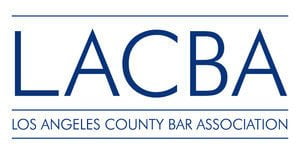California enacted its stalking law, 646.9 PC in 1990. Eight years later, it was updated to include threats which are electronically communicated – also known as cyberstalking. California’s law is among the toughest stalking and cyberstalking laws in the U.S.

cyberstalking, california 646.9 pc – san pedro attorney don hammond
The relative anonymity of the Internet makes email, instant messaging, and other online or electronic communication services attractive vehicles for stalkers who are either unable or unwilling to confront their victims in person. An offense under California 646.9 PC can be prosecuted as either a misdemeanor or felony.
California enacted its stalking law, 646.9 PC in 1990 following two high-profile celebrity stalking cases, one of which led to murder. Eight years later, the law was amended when legislators recognized the problem of cyberstalking and updated the definition of a “credible threat” to include threats which are electronically communicated. California’s stalking law is among the toughest in the U.S.
What is stalking?
In its simplest sense, stalking is repeatedly following, harassing, and/or threatening another person to the degree that the individual fears for their own or their family’s safety.
What is cyberstalking?
Cyberstalking was incorporated in California’s anti-stalking law due to the growing problem resulting from the relative anonymity of the Internet. Email, instant messaging, and other online or electronic communication services provide a vehicle for stalkers who are either unable or unwilling to confront their victims in person.
Examples of cyberstalking:
- Sending unwanted and/or unsolicited harassing or threatening emails.
- Sending unwanted and/or disturbing text messages, instant messages, or “sext” messages.
- Pretending to be another person and posting online content in that person’s name which is specifically intended to result in arousal or anger directed at that person.
- Posting personal information about another person and encouraging others to harass that person.
- Accessing online accounts in order to damage another person’s credit rating or interfere with their banking or financial accounts.
- Posting humiliating or embarrassing information or images about another person.
Elements of the crime
To obtain a successful conviction under 646.9 PC for cyberstalking, the prosecution must prove beyond a reasonable doubt the essential elements of the state’s anti-stalking law, but also that the credible threat was communicated through an electronic device. The four elements of cyberstalking are:
- Willfully and/or maliciously harassing another person.
- Making a credible threat against that person.
- Putting that person in reasonable fear for their own or their family’s safety.
- The threats and/or harassment were made through the Internet or via another electronic communication device.
Credible threats
For the purposes of this law, a threat is considered credible only if the alleged perpetrator has the apparent ability to make good on the threat.
In other words, if the alleged perpetrator makes a statement such as, “I am going to have you thrown in jail for the rest of your life,” the threat is not credible because the perpetrator would have no apparent ability to carry out the threat.
However, if the alleged perpetrator states, “I am going to wipe you off the face of the earth,” the threat would likely be considered credible. Even though the threat is not specific as to how the perpetrator would accomplish this goal, the threat is clearly intended to cause fear, and the perpetrator can potentially fulfill the threat.
It is also important to note that the person making the threat need not intend to actually carry it out.
Cyberstalking and domestic violence
Cyberstalking can also be charged under California’s domestic violence law if the alleged victim is:
- Engaged to be married to the defendant.
- The defendant’s current or former spouse.
- Someone who cohabitates with the defendant.
- The parent of the defendant’s child(ren).
- Anyone the defendant dated.
If domestic violence offenses are added to the charges, the defendant will be subject to additional criminal penalties if convicted.
Offenses related to cyberstalking
There are other offenses that may be charged in conjunction with violating 646.9 PC, including:
- 422 PC – Criminal threats
- 647(j)(4) PC – Revenge porn
- 653.2 PC – Posting harmful information on the Internet
- 653(m) PC – Making annoying phone calls
- 288.2 PC – Harmful matter sent to a child
Criminal penalties
Cyberstalking is a California wobbler offense that can be charged and prosecuted as a felony or a misdemeanor based on the overall facts and circumstances of the case, plus the defendant’s prior record, if any.
Misdemeanor cyberstalking penalties may include any or all of the following penalties:
- Up to one year in county jail.
- A fine of up to $1,000.
- Misdemeanor probation.
- Psychiatric counseling.
- Confinement in a state mental health hospital.
- A restraining order prohibiting future contact with the victim.
Felony cyberstalking penalties may include any or all of the following penalties:
- Up to five years in state prison,
- A fine of up to $1,000,
- Felony probation.
- Psychiatric counseling.
- Confinement in a state mental health hospital.
- Restraining order prohibiting any contact with the victim.
- Lifetime registration on the California sex offender registry.
Legal defenses
There are several ways to fight a cyberstalking charge. Retaining the services of an experienced and knowledgeable attorney who can provide legal advice which is applicable to the unique facts of the case is essential. Possible defenses include:
- The alleged threat was not credible.
- There was no intent to place the alleged victim in fear.
- Mistaken identity.
- False accusations.
- Police misconduct or investigative errors.









